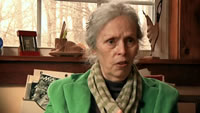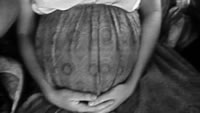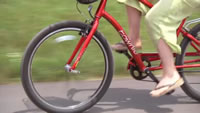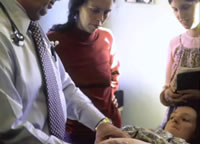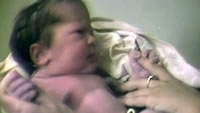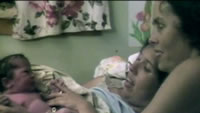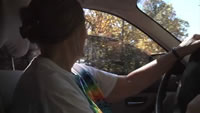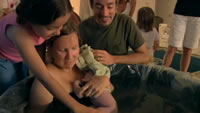Film: Birth Story: Ina May Gaskin and The Farm Midwives (2011)
Cast includes: Ina May Gaskin, Steven Gaskin
Director: Sara Lamm (Dr. Bronner’s Magic Soapbox), Mary Wigmore (Dealbreaker)
Genre: Documentary (95 minutes)
“How did we get so afraid of birth that millions of woman think giving birth safely involves surgery?” asks Ina May Gaskin. “A lot of young women think giving birth the old way is gross.” (She gets a laugh when she say’s that.) Ina May Gaskin is probably the most famous midwife in the world. In 1971 she helped to found The Farm Midwifery Center in Summertown, Tennessee. She later published several books, including “Spiritual Midwifery,” which has been translated into several languages and is a classic on the topic of natural childbirth. Ina May tells us, “Natural childbirth is in danger if being wiped out by the ever increasing rate of cesarean births all over the globe. In the US, it’s 1 in 3… in China, it’s 50%... in Brazil, it’s 95%.”
Ina May’s first child was delivered in a hospital with forceps. She tells us that before she knew it, she was being strapped down as if she were in a medieval torture chamber so that the baby could be extracted by force. She wasn’t even allowed to see the baby until the next day. So today, her #1 rule for a young midwife is, “Be nice.” In the late 60s, Ina May arrived in San Francisco after a stint in the Peace Core. That’s where she met her future husband, Steven. Steven was becoming known for his speeches on non-violence. When he decided to do a speaking tour, a number of friends came along. A few of the women were pregnant, and when the time came, Ina May volunteered to help. It all went well until one newborn was turning blue. Steven, who had been a medic in Korea, instinctively knew to give mouth-to-mouth resuscitation, saving the baby’s life. That’s when Ina May “got a lesson in responsibility” and began studying and planning for possible problems. Today, they always take an emergency kit, but hardly ever need it. When they work with the mother, most potential problems turn out not to be problems.
After the speaking tour, they found the San Francisco scene had deteriorated into a drug scene, so they decided to buy land in Tennessee and set up a commune with midwife services for the surrounding area. Throughout the film, Ina May and the other midwives talk about their approach to the birthing process. They have a library of film footage of births they attended, dating back to the 70s. Graphic film footage is used abundantly as they talk about helping women deliver babies at home, often surrounded by family and friends… a distant cry from a sterile hospital setting. Ina May feels women are being steered toward C-sections at an alarming rate, as if there’s no health risk from abdominal surgery. (Insurance companies certainly play a role in decision-making.) Yet the death rate from C-sections is far higher than in the thousands of births her midwives have attended. Today, Ina May’s book is considered a must-read for women who are trying to decide what kind of birth story they want for a new child. And now this film will be another good source of information. If graphic anatomical imagery isn’t appealing, or if you’re not going to be involved in a birth anytime soon, you may want to skip this film… although it will change your views on the most fundamental healthcare decision of all. As it turns out, “women’s bodies are pretty well designed for giving birth.”

2 popped kernels
The world’s most famous midwife tells us about her journey and what she’s learned along the way
Popcorn Profile
Rated: NR (Nudity)
Audience: Young adults & Grown-ups
Distribution: Art house
Mood: Neutral
Tempo: In no hurry
Visual Style: Amateur video
Character Development: Engaging
Language: True to life

